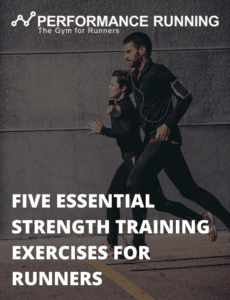
By David Nogle, I.S.S.A. Certified Personal Trainer, I.S.S.A. Certified Nutrition Coach, Runner
Many sprinters have unique journeys in the world of running. While in high school, many sprinters are on a team to help improve other sports while out of season. In college, sprinting gets a lot more specialized. With so many different divisions and governing bodies for college athletics, it becomes apparent that there is a place for any sprinter in the world of track and field. However, once moving to the world of open athletics, it’s only a small percentage who continue. Many sprinters convert to running middle distance, and just as often, long distance. While it is more of a simple process to put on a local 5k, groups tend to stick to longer distances and road races. Many states with scored running series won’t count shorter distances as it isn’t an accurate reflection of a team, due to the sparsity of sprinters. If you look up local races, you’ll seldom find numerous sprint races, rather you’ll find all distances of anything 1500m+. Sprinting also has a much younger prime than distance running. With most sprinters passing their peak by their mid to late twenties (often earlier), many distance runners continue to PR into their thirties. Even at the elite level, nine out of the ten fastest marathoners ever were 26+ at the time of their current best time, as of the time this article is being written. So, there are a few reasons a sprinter might convert to distance running. While many clubs and groups continue to sprint, the vast majority move up to higher distances. However, there is a lot that goes into that process. Here are some tips to improve at a new aspect of the same sport.
There are plenty of training differences, and this may be the most obvious place to start. First of all, you’ll likely be spending more time running. While you can choose how much time to spend on it, and it’s entirely up to you how dedicated you get, distance running takes more time than sprinting. With that, your typical workout will generally be more relaxed. You’ll be doing a lot of aerobic development runs. These are long, easy runs. That’s a comfortable pace, where you are within yourself at least to where you can hold a conversation. This may be somewhat foreign to a sprinter. You still will do speed work though. The hardest workouts will typically be speed workouts but only 1-2 times a week, and 1-2 “long runs” a week. Long runs in this context refer to a run that’s even longer than your typical run. These can easily make up 20% of your weekly mileage in a single run, and often even make up 25%+. Here are some training tips:
- Get a running coach! These trainers know the ins and outs of distance running, and they’ll help you make the adjustments needed.
- Get into a running group if you can. This community will not only help you learn about this new aspect of the sport, but you’ll also find a very welcoming community.
- Know the purpose of each run. When you’re supposed to have an “easy day,” take it easy. Again, take your easy runs easy. You don’t have to be sore to have accomplished something, and if you are sore after an “easy day,” you absolutely went too hard. Some trainers would even argue that for somebody first starting who expects to be sore. That said, once you have a base to where you can run intervals at a pretty high intensity without having much concern of injury, be ready to redline these when appropriate. Know what events/races you have coming up, and know your week plan. With so much volume to running for endurance, you’ll want to know the specific purpose for each run, and take that to heart. The thing to avoid in this circumstance is hyperfocusing on one day. For example, you might have a moderate-easy day. Let’s say you typically run 10 minutes per mile on easy days. Today you feel good, so you go 8:45 pace. You’re burnt up, but it was a good workout. Uh oh! Tomorrow you have a speed workout meant to work on mile pace effort. Now you’re sacrificing a more important workout because you decided to tire yourself out on an aerobic development workout, with very little added benefit given the pace that is an “easy pace” either way.
A couple things will change in your running, namely form. The big difference is that you’ll be using backside mechanics. You’ll be landing with your weight further back, and utilizing your hamstrings more. This will also lead to less vertical oscillation (bouncing up and down as you run, your head will move less). This will lead to a less explosive stride, yet a far more efficient process. One thing that is a little more varied and personal is what part of the foot you’ll land on, but generally you’ll be landing closer to the midfoot rather than the front of the foot. While I could continue to ramble about the many changes that take place in form including differences in arm swing and heel recovery, there are great ways to improve this on your own without overthinking it. First, look at videos both teaching proper form, and also watch distance runners (on the elite level). Secondly, you can be coached. Consider getting a stride analysis. Finally, the absolute best way to convert your form is simply by running. Your muscles will adapt to your new category of running, and make almost every adjustment needed without much conscious effort.
These are some basic tips to get any sprinter into the world of distance running. In an upcoming blog, I will discuss some more basic/intermediate tips for distance running, and discuss choosing races, additional tips on mentality, and more. Stay tuned and happy trails!
Photo by Andrea Piacquadio, obtained by Pexels.com




Recent Comments